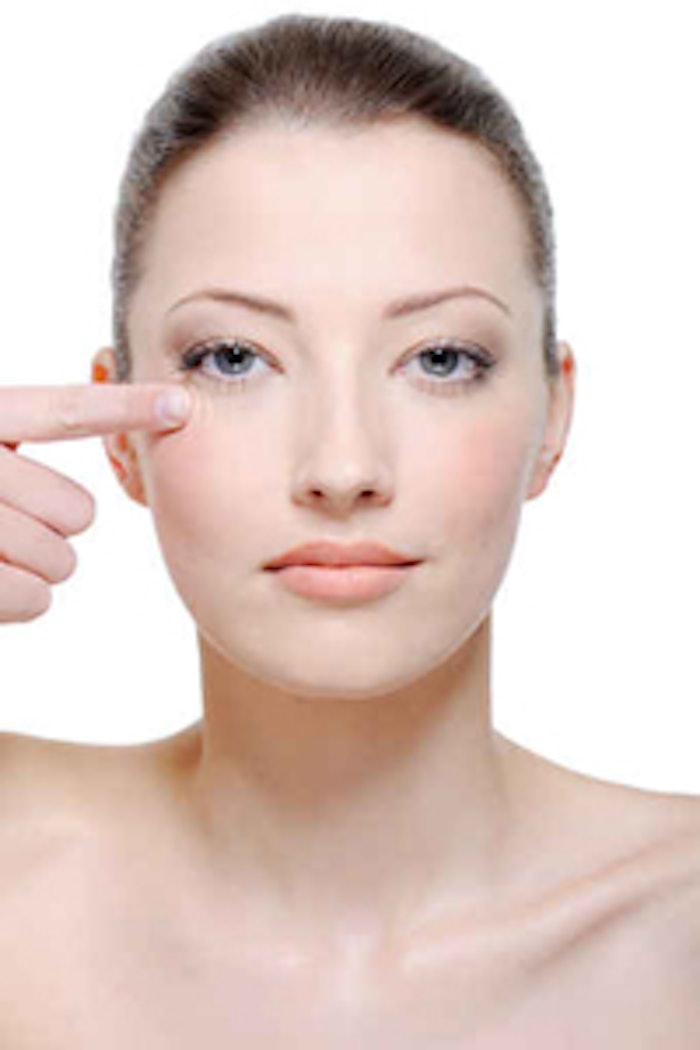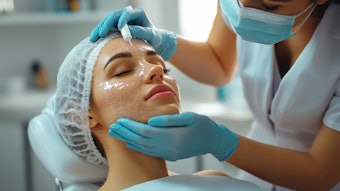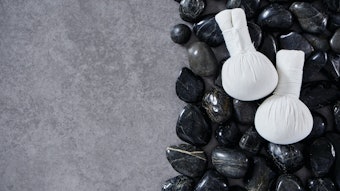
Clients come to the spa and expect instant skin perfection. Of course, this is not possible, but through the implementation of well-planned treatment regimens, their skin conditions can be noticeably improved. Then, when they become happily aware of the improvements and are even surprised about how great they look, your new goal should be to maintain those conditions and possibly even improve them.
To do that, start with the right treatments and home care, and that means no guesswork. You must be able to look at a client and know what to recommend and know the results will be great. Can you do that now, with full confidence? This is a dilemma many estheticians continually experience and can often be a reason for low confidence in the treatment rooms.
The Grades of Aging
There is a way to bypass that dilemma: Learn a shortcut—a way to know which products and treatments are best for a client’s skin every time, and what treatment plan effectively marches a client toward a chosen goal. The Grades of Aging do this for you. With them, if you know your products and ingredients well, you can quickly design a treatment program specially tailored for each client. Your plan guides clients toward their goals and keeps them right where they are, happy and pleased with their skin—and you.
The Grades of Aging are classified from 0 (youthful) to 5 (severely aged) in a logical and progressive order. Each is described according to the aging condition of the skin—not the chronological age—and states the category of ingredients needed for influencing the skin to improve that particular classification. The grades are based on the Glogau Classification of Photoaging and Rubin Classification of Aging with expansions that enable you to know the products that best suit your client’s skin.
Grade 0
Youthful, supple skin; even skin tone; and great firmness and elasticity. The treatment principle for this skin is not repair; it is prevention of damage in order to keep it in the condition it is in for many years to come. Aggressive treatment is unnecessary, and over-the-top exfoliation of this skin grade can cause irritation and quite possibly quicken aging.
Professional care. Professional care should include facials that are full of antioxidants, vitamin C treatments that help protect the skin from sun damage and moisturizing masks with penetrating antioxidants. Gentle scrubs or enzyme treatments should be used as the deep cleansers in these clients’ facials.
Home care. Home care should include an enzyme cleanser for natural exfoliation, a moisturizing and antioxidant-rich sunscreen for protection in the morning, and an antioxidant-rich moisturizer for overnight. The home care treatment product for the eyes should contain antioxidants and be moisturizing in the evening. A gentle scrub one time per week will keep the keratin normalized and allow for the penetration of ingredients.
Start this client on mineral makeup now and provide education about the damage the sun can do to the skin throughout time.
Grade 1
A hint of fine lines around eyes, only in movement areas; firm skin with good elasticity. This client’s skin is still in great shape, but it is not as bright and supple as Grade 0 skin. The treatment principle is still prevention, but it is very important to keep the skin in its current condition. Only light exfoliation is needed, not aggressive treatments.
Professional care. Professional care for these clients includes facials full of antioxidants and hyaluronic acid, a master moisturizing ingredient. Vitamin C treatments should be used, as well as hydrating masks to maintain balance and optimal skin health. A low percentage acid resurfacer every three to four months (20–30% lactic acid at a 3.0 pH), or a light microdermabrasion to encourage glow and good cell turnover can also be performed, as long as there is no irritation or adverse effects. Higher acid resurfacing treatments are unnecessary at this grade and should be saved for when the client truly needs a stronger professional treatment program.
Home care. Home care is the same as it is with Grade 0, but clients should use an antioxidant cleanser at night and a scrub one to two times weekly. The nighttime eye treatment should be upgraded to one containing anti-aging antioxidants and moisturizers.
Grade 2
Fine lines around the eyes, possibly in expression areas and on forehead; slight deepening of the nasolabial folds; minor loss of firmness and tone. Treatments must include repair to some degree, with more exfoliation stimulation and higher levels of moisturizers and maintenance.
Professional care. Professional care should be a step up from Grades 0 and 1, with the first treatment being an enzyme facial to remove dead cells and allow the penetration of home care products. After the first treatment and two to four weeks on a proper home care program, this client will have a three- to six-treatment series twice a year of light acid resurfacers (20–30% lactic acid at 3.0 pH). Antioxidant-rich and moisture-rich maintenance facials should be offered between the series with an occasional light microdermabrasion to help increase cell turnover.
Home care. Home care should also be stepped up with the client using an antioxidant-laden cleanser in the morning and evening, as well as an exfoliating cleanser every two to three nights, such as a 15% glycolic or lactic cleanser, or home care lotion. The moisturizer must be high in hyaluronic acid and should also include antioxidants. Eye area home care should be moisturizing, and rich in antioxidants and dermal-building peptides. Preventive products with ingredients such as copper will help stave off aging.
Grade 3
Fine lines are fully developed; a hint of actual wrinkles in expression areas; definite deepening of nasolabial folds; hyperkeratotic areas possible; some loss of firmness and elasticity on the neck, lower face, eye area and forehead. This client needs repair right from the start, as well as regular exfoliation. Home care should be a step up in percentages and assertiveness. The client must be observed closely to determine the need for higher-grade treatments and home care because this grade defines whether a little or a lot of later aging will occur. It must be addressed now and reversed, if possible.
Professional care. Professional care should be given in a higher level, and requires an enzyme facial first in conjunction with the appropriate home care to balance the skin and prepare it for more assertive treatments. This client should also have a six-treatment series twice a year of higher acid resurfacers (30–40%). If the skin responds well to the first three treatments, a one-pass microdermabrasion treatment can be added to the service. This client’s skin will also respond well twice yearly to a peel that contains low percentage trichloroacetic acid (TCA) and other exfoliants in a three-treatment, one-per-month series. Between series, this client needs to have deep cleansing enzymes added to the deep cleanser step of their facial, followed by a highly moisturizing mask with antioxidants and dermal-building ingredients.
Home care. Home care should be the same as Grade 2, with an antioxidant cleanser in the morning and an exfoliating cleanser every evening. Treatment products should contain higher-grade dermal-building ingredients, such as the peptides. Exfoliants are very important to this client because the skin has slowed its sloughing rate and AHAs speed up the cell turnover rate. The home care program should contain AHAs or retinols for two to four weeks, according to the client’s Fitzpatrick classification, before the higher level resurfacers. A lightening product is usually also important for this client, especially if there is a history of excessive sun exposure. DNA repair products are even more important and eye area home care should be even more moisturizing, building and, if hints of shadows or puffiness under the eyes exist, include the use of an ingredient to address those issues, as well.
Grade 4
Developed wrinkles; deeper nasolabial folds and definite forehead lines; hyperkeratotic areas; loss of firmness and elasticity in neck, lower face, eye area and forehead. This client needs repair and higher level exfoliation to get the skin to a lower grade of aging as soon as possible. With appropriate products, services and cooperation, you should be able to reduce the client to a Grade 3 readily, and possibly even a high Grade 2.
Professional care. Professional care should consist of two series per year of higher acid resurfacing treatments, or a one-time 25–30% TCA peel yearly or bi-annually. A monthly facial is a must for this client so the esthetician can observe any changes on the skin, such as hyperkeratosis, actinic keratosis or melasma, allowing the esthetician to restructure and intensify the professional treatments and home care. This type of damage control should initiate a quick response to the changes so damage can be arrested and repaired.
Home care. Home care should begin with a balancing program that is intensified with retinoids or AHA products in order to speed up exfoliation and dermal development. It is recommended the pre-peel or -series home care program contains AHAs or retinols for two to four weeks, according to the client’s Fitzpatrick classification, before higher level resurfacers and a TCA peel are administered. Of course, the moisturizer should be high in hyaluronic acid and other ingredients, as well as antioxidants and building ingredients. Peptides of appropriate percentages can be used for maximum results, and products containing DNA repair ingredients remain important. Copper is a key ingredient for this grade, also. Usually, a lightening product is important for this client due to hormonal changes and sun damage. The eye area home care is moisturizing, building and should have an ingredient for treating shadows under the eyes.
Grade 5
Deep wrinkles; deep nasolabial folds; aged appearance; loss of firmness and elasticity on neck, lower face, eye area; deep forehead wrinkles; definite hyperkeratotic areas.
Professional care. Professional treatments should be performed by dermatologists or plastic surgeons because deep peels and lasers are needed to rebuild a demolished dermis and thin epidermis. If possible, work with the physician to maintain good health of the client’s skin while the treatments are being performed. Proper education about sun avoidance is necessary for this client, especially during the healing and recovery process because deeper peels and lasers make the skin even more sun-sensitive.
Home care. Home care after skin balance is achieved should involve high percentage anti-aging ingredients with targeted delivery systems. Retinoids or AHAs should always be introduced before the deep peels or professional laser treatments, which are usually recommended by physicians. Home care post-treatment products should include those that contain ingredients such as hyaluronic acid, copper, wound-healing plant extracts, and zinc or titanium oxide sunscreens should be introduced while the epidermis is re-epithelialized. The treatments and home care products should include higher active ingredient percentages for clients of higher grades of aging.
Assign your products
The Grades of Aging method for defining an anti-aging treatment program is dependable and, for that reason, supports self-confidence in estheticians’ decisions. The treatment dilemma, “What product should I recommend,” or “What treatment should I perform,” is gone, and the esthetician designs effective treatment plans and knows the right combination of home care and professional treatments. What better confidence-builder can an esthetician have than making the right recommendation?










